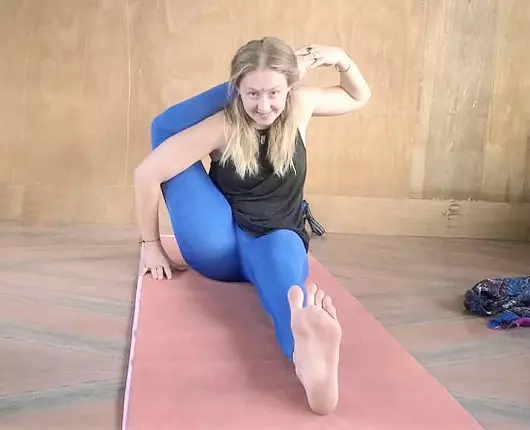
300 HOUR YOGA TEACHER TRAINING IN INDIA
![]()
Yoga Teaching is a Craft. 200 hours is just a jumping-off point on the journey to becoming a skillful Yoga educator. Can you think of any other career where only 200 hours is enough learning? We do not assume this training will teach you everything you need to know. Instead, this level 2, 300 hour Yoga Teacher Training in Rishikesh will give you a rich set of skills to add to your Teacher Toolbox. This is a deepening course based on the premise that consistency creates potency and yields success + longevity.
THE 300 HOUR YTT COURSE STARTS ON 5th OF EVERY MONTH
Limited Seat: 08 – Because we never compromise with the quality and standard of our course.
![]()
300 hour Yoga Teacher Training in Rishikesh
At Hatha Yoga World’s 300 hour Yoga Teacher Training in Rishikesh program, we begin the course with a fire ceremony to bless a new beginning. After the ceremony, on the first day, you will get a bag and shirt with the Hatha Yoga World logo print, a book called “Asana Pranayama Mudra Bandha” by Swami Satyananda Saraswati, a course manual, a notebook, and a pen. During the course, you will get a neti pot to clean your nostrils every morning in the kriya class. On the last day of the course, you will get a Yoga Alliance USA certificate as proof that you now being a 300-hour yoga teacher. You will also get a rudraksha mala from us as a gift and blessing for your future as a teacher and maybe even a studio owner.
ADVANCED 300 HOUR YOGA TEACHER TRAINING IN INDIA
Yoga is a tool to bring the world together
Hatha Yoga World is purposefully created to empower teachers to feel grounded in a seat of leadership with integrity and knowledge. See your position, improve your yoga teaching skills, and become able to teach yoga confidently and compassionately. You are the creator, and all things are possible. You are only limited by who you think you are, and HYW wishes to see you contribute the gifts you have to the world. This way, we can empower each other to follow our truth. We are all guilty of dreaming and hoping, but the moments we are content with are peaceful feelings. We can realise this through our sadhana but keep the perception of yoga and spirituality in the way of making yoga your lifestyle. The practice should form an unbroken whole in our lives.
Daily life should be about getting better every day physically and spiritually and seeking knowledge about the body and health. Spend time looking at life and questioning habits without getting too busy with work and everyday tasks so that we forget the essence of life, which is feeling and being aware. Stay connected with yourself. We do not have to quit everything, but what can we do to take a step back and be our own best friends? Fall in love with taking care of yourself. Only some people need to choose yoga as their work, which is not the point. Yoga will help individuals do their job better and live an ordinary human life with more awareness.
Benefits of joining the 300 hour Yoga Teacher Training in Rishikesh:
You are not here by coincidence, so move forward with a bright, optimistic, and positive mindset surrendering to the beauty of the present moment and be aware of understanding your heart, soul, and the signs leading you.
“You have a cup of black tea. You put ginger, lemon, and honey in the cup and call it a ginger-lemon-honey tea, but it is still black tea, just with things added. This applies to yoga as well. Yoga cannot change.”
A practical exam where students teach a final asana and pranayama class is mandatory at the end of the 300 hour yoga teacher training in Rishikesh. In anatomy and philosophy, the test will be a written test. The exam is not meant to feel like a violent situation for our students; on the contrary, we hope our future graduates will find joy in the whole process, from learning to creating a class to teaching it and getting feedback. To go through this process with clarity, it is essential to be present throughout the course at our yoga TTC school in India. You will have all the support and tools you need. Our teachers are here to help prepare your body, mind, and spirit for sharing yoga.
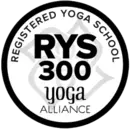
300 HOUR YTTC
CURRICULUM
01 HATHA YOGA (TRADITIONAL YOGA)
Hatha Yoga practices have become even more relevant in the modern world where people lead sedentary lifestyles, have improper dietary habits and a lot of mental and emotional pressure. These habits which create excess fat, stress and tension, combined with the effects of environmental pollution, create an imbalance in the sympathetic and parasympathetic nervous systems. The Hatha yogis found that certain specific body positions open the energy channels and psychic centres. They found that developing control of the body through these practices enabled them to control the mind and energy and through practice gain health. Yogasanas are tools providing a stable foundation necessary for the exploration of the body, breath, mind and higher states.
02 ASHTANGA VINYASA
This fast paced and energetic style of Yoga became popular in the 20th century. When practicing Ashtanga Vinyasa you flow between postures in coordination with the breath in a set sequence. The postures are linked together by a ‘vinyasa’. There are several different set series which can be practiced according to the level of the practitioner. There are six different series. The first one is called ‘The primary Series’, the second one ‘The intermediate series’ and the third one is called ‘The advanced series’. The advanced series is split into Advanced A (third series), Advanced B (fourth series), Advanced C (fifth series) or Advanced D (sixth series).
03 VINYASA YOGA
Vinyasa is a flow of movements in coordination with the breath. The flow brings a feeling of natural balance. Experience the beauty of listening to your body and flow from one asana to another. When practicing Vinyasa, you perform a sequence of postures with one leg leading and then you practice the same sequence with the other leg leading afterwards. Sometimes the breathing in the practice is only one breath per movement. A Marjariasana stretch is a good example of a small flow where inhalation is done on the backbend and for the exhalation you do a forward fold. When practicing Vinyasa, you gain great benefits both physically and mentally. You may have heard the phrase ‘go through a Vinyasa’. This means that you should do a specific flow to link the postures together. The postures practiced in this specific flow are plank, chaturanga, upward facing dog and downward facing dog.
04 YIN YOGA
Yin Yoga is a wonderful way to detox both mind and body. Here poses are held from 2 to 10 minutes. The asanas work with the bones, joints, ligaments, tendons and fascia. Stimulation creates tension and compression which creates a healthy change in the tissue. Yin Yoga primarily targets our connective tissue contrary to Yang Yoga which focuses on internal heat and targets the muscles as the primary tissue through contraction. Passive postures challenge you to find calmness in an asana, which might be a slightly uncomfortable position to hold. You learn how a small movement can change the asana completely, to sit with difficult and painful emotions and to work through this in the asana. The asanas are promoting free flow of energy in the Nadis or meridians of the body. The approach in Yin Yoga is to focus on the Yin side contrary to the Yang approach observed in Ashtanga Vinyasa, Hatha, Vinyasa or other dynamic sun orientated styles. Yin Yoga nourishes our Yin energy and the feminine force. The Yin practice focuses on opening up the body by stretching the tissue and detoxing the mind, through the stillness found in the asana.
05 ART OF ALIGNMENT (PROPER ALIGNMENT, ADJUSTMENT & MODIFICATION)
In this class you gain knowledge of how to adjust yourself in a posture and other students (when teaching) and how to in proper alignment. When you carry this knowledge about each asana with you, then you can build a session for yourself and students according to the different bodies and the energy you want to create in a sequence and class. The class is a learn-by-doing class where your instructor breaks down each asana to teach how to hands on adjust different body types.
06 PRANAYAMA (BREATHING TECHNIQUES)
Pranayama utilises breathing to influence the flow of Prana in the Nadis or energy channels of the ‘Pranayama Kosha (energy body). The techniques of Pranayama provide the method whereby the life force can be activated and regulated. The flow of Prana in the Nadis is influenced by being purified and thereby inducing physical and mental stability. The above-mentioned benefits are gained though different breathing exercises where you, for example, breathe alternatively through each nostril as practiced in ‘Nadi Shodhana’ or create heat in the body with ‘Bhastrika’.
07 ANATOMY & PHYSIOLOGY OF YOGIC PRACTICES
Learn the anatomy and physiology of the respiratory system to know the mechanics of breathing which includes topics like gas exchange, respiratory control, respiratory disorders, environmental and occupational factors and the impact Pranayama and a Yoga practice have on the respiratory system. This is just an example of what is taught in the anatomy classes. Other topics about muscles, the skeletal system and the cardiovascular system are also included.
08 MEDITATION
The main purpose of a Yoga practice is to create a flexible body to be able to sit in solitude to obtain a flexible mind. This can only be achieved without any discomfort in our body when we sit in meditation. A meditation practice is also known as Raja Yoga, royal Yoga or royal union. This path of Yoga is concerned primarily with the development of the mind using meditation (Dhyana) to further one’s understanding with reality and finally achieve Samadhi (liberation).
09 YOGA PHILOSOPHY & HISTORY
Studying ancient texts is a wonderful way to gain a better understanding of what Yoga is. An ancient text describing the eight limbs of Yoga written by Patanjali, is a useful text to be familiar with. Patanjali believed that impurities dwindle away with certain practices. The eight limbs are offered as a way of dealing with the afflictions of the mind, which are known as the five Kleshas: ignorance, ego, attachment, aversion and clinging. By identifying these habits or Samskaras of the mind through continual self-questioning and awareness, we work to reduce the suffering brought on by the afflictions of the mind. Although cycles of behaviour govern our life experiences, we can choose whether these will be destructive and negative or constructive and positive. The eight limbs provide practical suggestions on how to reach self-awareness by being alert in all our actions.
10 TEACHING PRACTICE & METHODOLOGY
As a teacher it is important to prepare a balanced sequence to guide safely, while leaving space for the student’s self-discovery and experience at the same time. You can create a class theme and ask the students to set an intention. Introduce the class by explaining the theme behind the lesson. Themes can be a target area, chakras, elements, meditation, philosophy, an intention or a certain message. Throughout the class, be available to the students if they need any help or props. Speak with a clear voice. Time management is important. The recommended time to stay in a pose depends on the person practicing. A teacher should offer guidelines, but they can be ignored if they are not appropriate for the student. Some students can remain in the asana much longer than suggested and others will release the pose sooner. This depends on the body’s needs, possibilities and limitations.
11 SELF PRACTICE
Having a self-practice is a very empowering act to do as a Yoga practitioner and Yoga instructor. The things learned can finally be applied in a self-practice and this leads to self-discovery and self-realization. A self-practice will also be a wonderful tool to use throughout life, to maintain good health physically and mentally. In Yoga we are seeking balance and to unite our body, mind and spirit to find absolute truth. Only through self-practice will these benefits arise.
12 MANTRA CHANTING
To chant mantras is a way of practicing Bhakti Yoga (Yoga of devotion) which shows us a way to direct our emotional energy in a positive way. It transforms anger, hate, jealousy and/or ego into love and compassion. Mantra is a word consisting of the verbal root ‘man’ (to think). An example of a mantra is the Gaytri Mantra: ‘Om Bhoor Bhuvassuvah, tat Saviturvarenyam, Bhargo devasya Dheemahi, Dhiyo Yo nah prachodayaat. The meaning of the mantra is ‘may there be peace on mortal, immortal and divine plans. I meditate upon the most brilliante splendour of the Sun God. May he stimulate our intellect, so that we are inspired to do the right action at the right time.
13 KRIYAS (CLEANSING PROCESS)
Here is an explanation of the different purification practices that will be practiced: Neti: a process of cleansing and purifying the nasal passages. Practices included in this category are: jala neti and sutra neti. Nauli: Nauli is the practice of massaging internal organs. It is the rotation of the abdominal muscles. Nauli massages and tones the abdominal organs. Spiritually, it simulates the Manipura Chakra, removes Prana blockages in the abdominal area and increases energy flow in the body. Kapalbhati: Kapalbhati is a breathing technique that clears the frontal portion of the brain. Kapalbhati aims at clearing mental dissipation and distraction. It removes toxins that block the mental energy. Kapalbhati has a positive impact on the brain and the nervous system. It aims at achieving one-pointed concentration. Spiritually, Kapalbhati stimulates the Anja Chakra. Trataka: Trataka is gazing at one point or at an object to develop the optimum concentration and one-pointed awareness. While doing Trataka, one gazes at a candle flame, Yantra, moon, etc. It balances the nervous system and relieves tension as well as anxiety. Spiritually, it activates the Ajna Chakra. It is very good preparation for meditation.
14 AYURVEDA
Ayurveda is a lifestyle. Ayurveda provides knowledge about life. In daily life we could experience disease and Ayurveda provides ancient knowledge about medicine to heal and prevent disease. Ayurveda is a natural and holistic lifestyle or approach when healing a disease. According to Ayurveda we are made of five elements and every individual is different and therefore should be treated as such. Ayurvedic treatment focuses on treating the root of the disease and not just symptoms. The five elements to make up the body is fire, earth, water, air and space.
15 KARMA YOGA
Karma yoga is mentioned in the scripture ‘Bhagavad Gita’ and is described to be a duty to perform without having expectations regarding the results. The process of Karma Yoga continues until the individual attains a zero balance (no karma remaining) wherein one achieves liberation, Enlightenment, Samadhi. Karma Yoga is an important step in the processes of higher Sadhana. It cleans impurities of the mind and purifies the soul. Only when mind and soul are purified can one move toward higher levels of meditation or consciousness.
UPCOMING DATES – 300 HOUR YOGA TTC IN RISHIKESH
>
| DATE | TRIPLE ROOM | SHARED ROOM | PRIVATE ROOM | BOOKING |
|---|---|---|---|---|
| 05th JAN. – 01st FEB. 2024 | |
|
|
BOOK NOW |
| 05th FEB. – 02nd MAR. 2024 | |
|
|
BOOK NOW |
| 05th MAR. – 01st APR. 2024 | |
|
|
BOOK NOW |
| 05th APR. – 01st MAY 2024 | |
|
|
BOOK NOW |
| 05th MAY – 01st JUNE 2024 | |
|
|
BOOK NOW |
| 05th JUNE – 01st JULY 2024 | |
|
|
FULLY BOOKED |
| 05th JULY – 01st AUG. 2024 | |
|
|
BOOK NOW |
| 05th AUG – 01st SEP 2024 | |
|
|
BOOK NOW |
| 05th SEP – 01st OCT 2024 | |
|
|
BOOK NOW |
| 05th OCT – 01st NOV 2024 | |
|
|
BOOK NOW |
| 05th NOV – 01st DEC 2024 | |
|
|
BOOK NOW |
| 05th DEC – 01st JAN. 2025 | |
|
|
BOOK NOW |
UPCOMING DATES -2025 – 300 HOUR YOGA TTC IN RISHIKESH
>
| DATE | TRIPLE ROOM | SHARED ROOM | PRIVATE ROOM | BOOKING |
|---|---|---|---|---|
| 05th JAN. – 01st FEB. 2025 | |
|
|
BOOK NOW |
| 05th FEB. – 02nd MAR. 2025 | |
|
|
BOOK NOW |
| 05th MAR. – 01st APR. 2025 | |
|
|
BOOK NOW |
| 05th APR. – 01st MAY 2025 | |
|
|
BOOK NOW |
| 05th MAY – 01st JUNE 2025 | |
|
|
BOOK NOW |
| 05th JUNE – 01st JULY 2025 | |
|
|
BOOK NOW |
| 05th JULY – 01st AUG. 2025 | |
|
|
BOOK NOW |
| 05th AUG – 01st SEP 2025 | |
|
|
BOOK NOW |
| 05th SEP – 01st OCT 2025 | |
|
|
BOOK NOW |
| 05th OCT – 01st NOV 2025 | |
|
|
BOOK NOW |
| 05th NOV – 01st DEC 2025 | |
|
|
BOOK NOW |
| 05th DEC – 01st JAN. 2026 | |
|
|
BOOK NOW |
Fees & Registration:
Hatha Yoga World’s 300-hour Yoga TTC program costs, including room and board. The room and food package includes 28 nights and 3 Sattvic (Indian vegetarian) meals each day.
A deposit of $ 300 must be made through PayPal to reserve your spot.
Refund policy:
The Confirmation Fee is 300 USD. This is non-refundable but may be transferred to any other upcoming 300 hour Yoga Teacher Training in Rishikesh.
If you cannot come to our TTC after paying the Confirmation Fee, you can use it for any future course or program. The Confirmation Fee is part of the entire Course Fee. The rest of the Course Fee balance must be paid in cash on the first day of the course, either in Euros, US Dollars, British Pounds, or INR, according to the Dollar rate on the payment date.
300 HOUR YOGA TEACHER TRAINING IN RISHIKESH – ACCOMMODATION
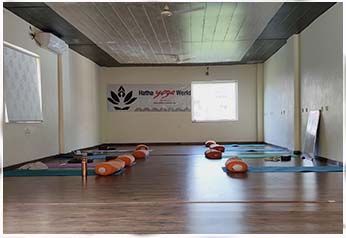

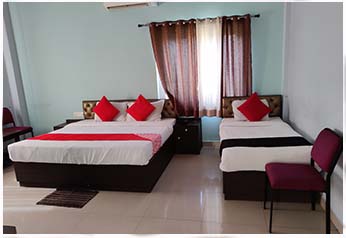
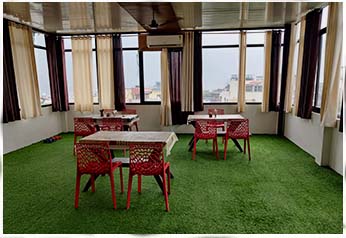
SAMPLE DAILY SCHEDULE
| 6:00 Am | Wake Up |
| 6:30- 7:30 Am | Neti kriya / Pranayama (Breathing) class |
| 7:30- 8:00 Am | Tea Break |
| 8:00-9:30 Am | Hatha yoga with proper alignment, Adjustment |
| 10:00-11:00 Am | Breakfast |
| 11:00-12:00 Pm | Philosophy |
| 12:15-1:15 Pm | Anatomy & Physiology |
| 1:15-2:00 Pm | Lunch / Rest |
| 2:00-4:00 Pm | Self-Study |
| 4:00-5:30 Pm | Vinyasa yoga (Flow) |
| 6:00-7:00 Pm | Mantra Chanting, Meditation & Yoga nidra |
| 7:00-8:00 Pm | Dinner |
| 09:00 Pm | Ligths Off |
- INCLUDED Things included in the Course fee
- MEALS OFFERED Daily vegetarian meals
- FACILITIES OFFERED In house help & support
- ACTIVITIES Other activities
We provide you with yogic food, which helps you physically increase your flexibility and stamina; mentally, it enables you to be aware of your thoughts and breath. We are very adamant about bringing nutritious, vegan, and gluten-free food to our students.
Students will be encouraged to tap into something greater that will be influential in cultivating an authentic voice on and off the mat

